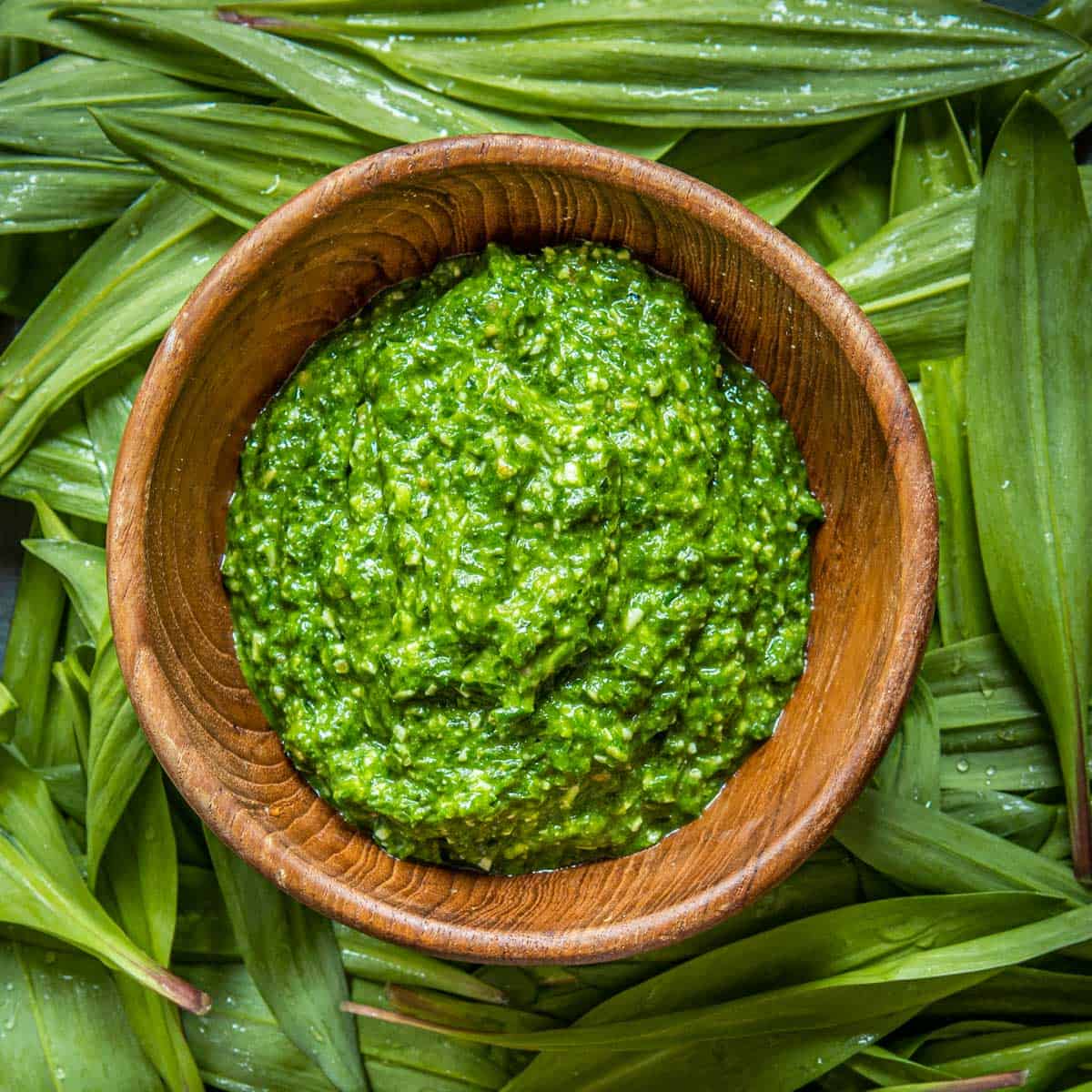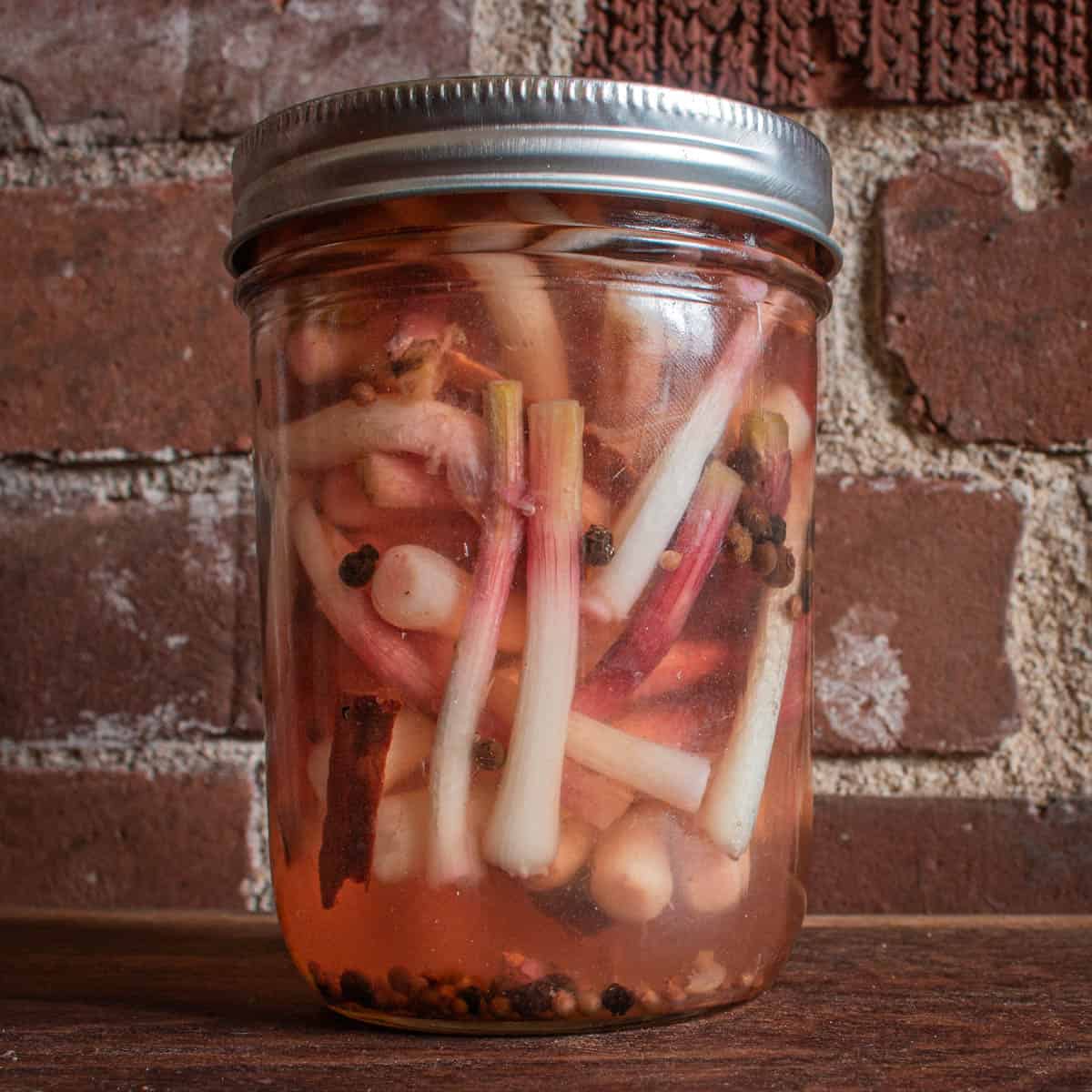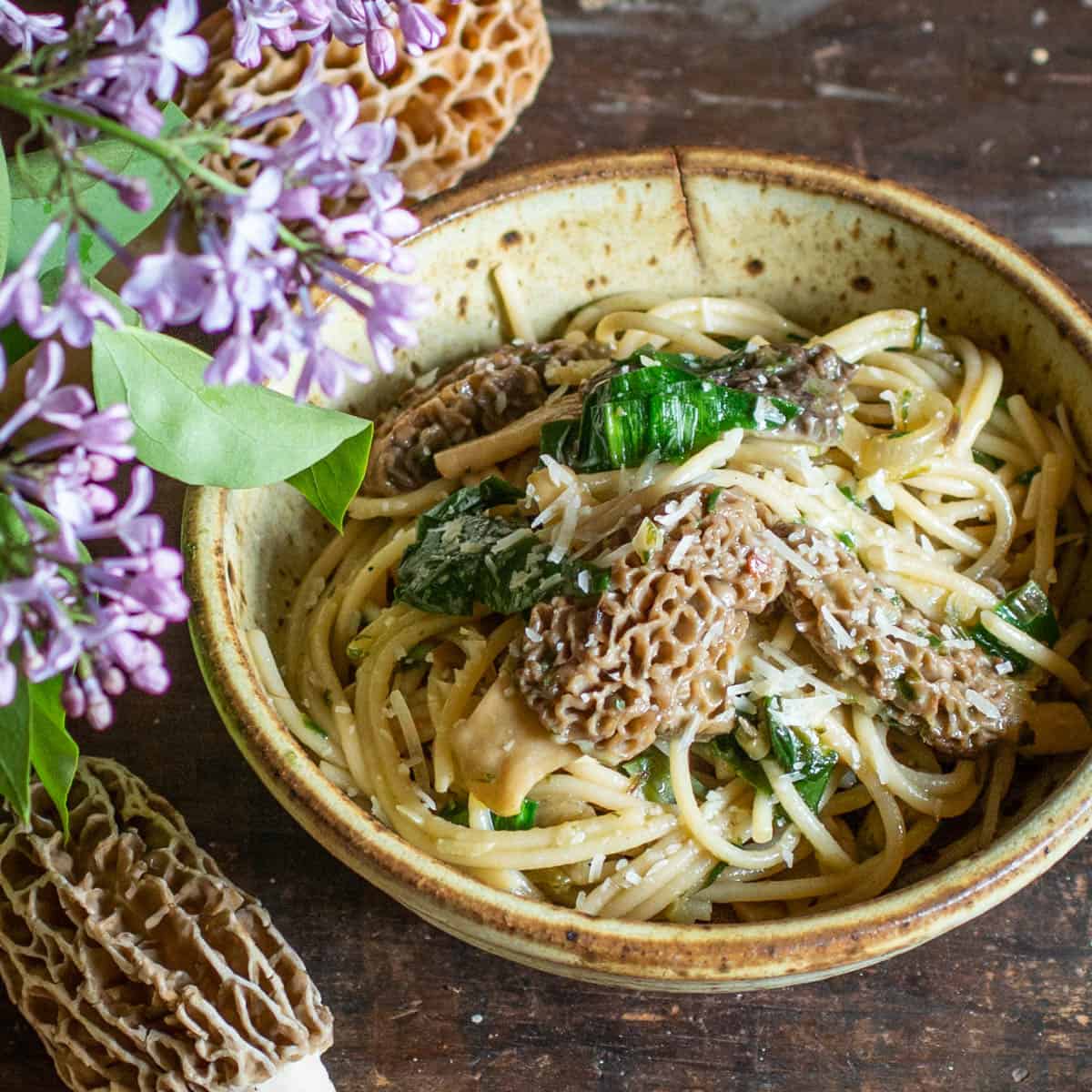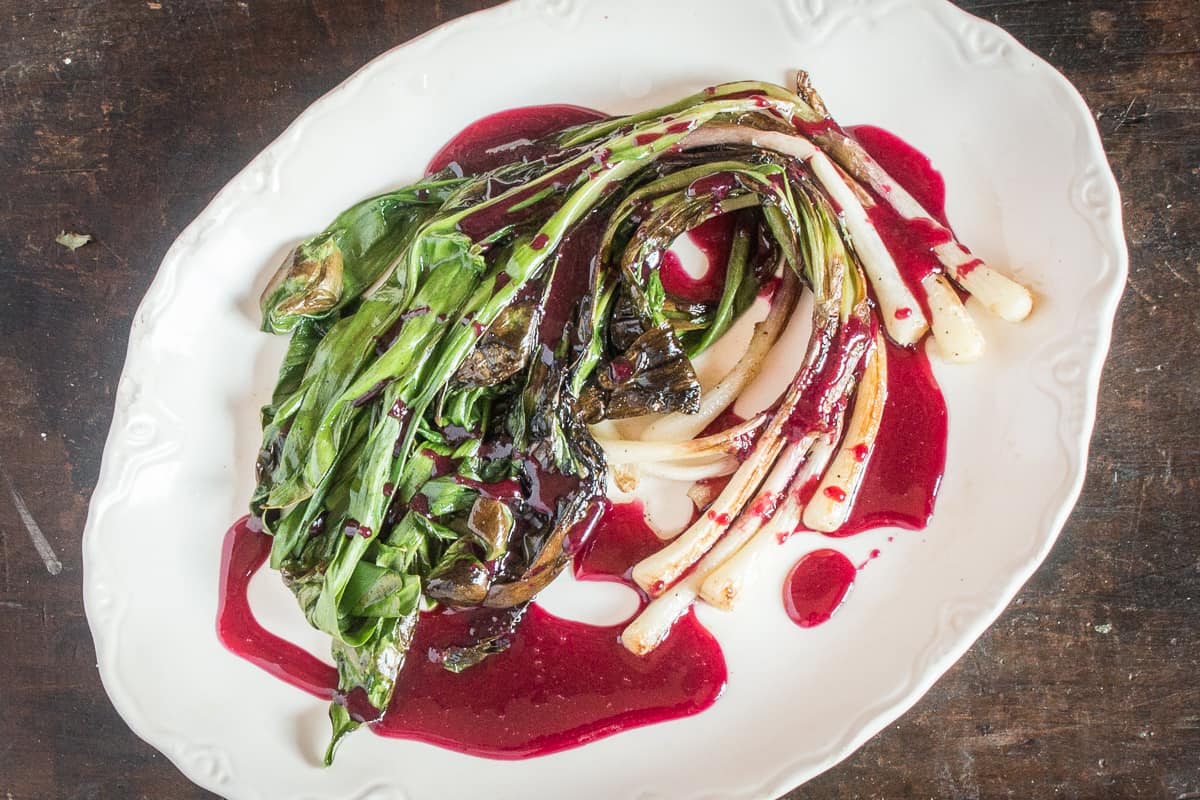Ramps, also known as wild garlic or wild leeks, (Allium triccocum, and Allium burdickii) where I live, are a delicious wild vegetable and one of Nature’s greatest gifts to foragers. Read on and I’ll break down everything you need to know about them.
The two I harvest are just a few of the many different types of wild alliums you could find though, and their cousins like Allium triquetrum (3-cornered leek) and Allium ursinum (bear garlic) and Allium victorialis (the victory onion) are enjoyed around the world.
Anyway you cut it, ramps and feral onions are one of your best friends in the kitchen, and people have been harvesting and enjoying these wild vegetables for millennia.
Table of Contents
Harvesting
Ramps are ephemerals, meaning that they come up early in the spring, with their leaves maturing before the trees form their leaves, which will eventually shade them out restricting their sunlight and their means of harnessing energy.
After the tree leaves fill out, around late May where I live, the ramp leaves will wilt and fall back, and it will appear that they’re completely gone, but they’re not. In mid summer, ramps shoot up their flower stalks, which will give scapes, eventually ramp flowers, and finally, seeds.
Ramp Sustainability
If you dig up a wild ramp, you kill the plant, and it takes 6 to 7 years for ramps to grow and mature. In patches on private land, it isn’t really a big deal to dig a few ramp bulbs here and there, but in a place like public land, where it’s illegal to dig wild plants, they can easily be over-harvested since multiple people will be hitting the same patch.
“If you harvest only ramp leaves, there’s no digging, no hours of cleaning and trimming, and, you can feel good knowing that your patch will be there the next year, and years to come, so that you can share your delicious onions with your friends and family.”
Wild alliums have been harvested for a thousands of years, but most of the people doing that had a much deeper relationship with nature than we do today, and a much more comprehensive knowledge and understanding of how to encourage their wild onion patches to grow and flourish despite harvesting bulbs.
How much harvesting is sustainable?
I see a lot of speculation on this. Some people say one leaf per colony. Some say remove one plant, bulb and all from every three colonies, or some other random, arbitrary number they’ve come up with.
Don’t get me wrong, I’m a conservationist, but the fact is people are going to harvest ramps, bulbs and all from public and private land whether we like it or not, and no one is going to walk around taking a single leaf here and there when they’re in a field of wild leeks as far as the eyes can see, and more importantly, when no one else is watching.
These plants can, and will take some harvesting of their bulbs. Some people, like my friend Sam Thayer are doing studies to figure out what the long-term impacts of harvesting are, exactly how many ramps a certain patch of land can sustainably produce, and what the proper way to go about doing it is from a scientific point of view is.
Until those studies are published though, here’s some sustainable harvesting tips:
Harvesting tips
- Know your local laws. Digging ramp bulbs on public land in the United States is Illegal in most places.
- Harvest from large stands where the plants seem to go on forever. Seeing a couple colonies here and there doesn’t mean it’s a “patch”.
- Leave whole colonies of ramps in tact as much as possible-consider taking 20% or less from each colony you disturb.
- Don’t concentrated your harvest in one area, spread out and give the plants some room to breathe, this will allow the ramps to spread and fill back in the spots naturally.
- If you find yourself in a public area where others have been harvesting, move to another untouched spot.
- If you harvest bulbs, come back during the late summer to gather seeds to spread in the patch. Help the plants that give you food.
- Plant ramps in your yard or garden to grow your own patch.
Ramp Leaves: The Most Sustainable Harvest
When I’m going out to pick ramps, most of the time I’m not bringing a shovel, I’m bringing a scissors. Why? Ramp colonies with their leaves cut will often still make flower stalks that make seeds and reproduce, those that get dug up, won’t. Secondly, it’s just easier. These plants don’t want to come out of the ground and digging them is hard work.
If you harvest only leaves, there’s no digging, no hours of cleaning and trimming, and, you can feel good knowing that your patch will be there the next year, and years to come, so that you can share your delicious onions with your friends and family.
That being said, I do harvest ramp bulbs when I please, but I’m harvesting them from private land, where I have permission. It is totally fine to dig ramp bulbs to your hearts content on your own property, or property where you have permission to dig.
How to Plant Ramps
As a perennial onion, Ramps can be planted into a shady area, and will come up year after year for you. They’re a wonderful addition to a native-lawn/food forest.
The only catch is that it takes time, a long time. Growing and tending your own patch will definitely give you an appreciation for how long it takes them to grow.
As a bonus, if you have a place to go and harvest them, the small baby leeks in your yard will be a good indicator for when you should go out and pick.
As far as how to plant your own patch you have a couple options. Here’s a quick breakdown.
Planting Ramp Seeds
Seeds will take the longest, but they’re also relatively easy to find, and plant.
Go to your patch in the late summer, after the flowers have formed, and find the seed heads.
Shake the little black seeds into a container, and bring them with you to plant the next year.
Make sure to toss some seeds around while you’re harvesting in the patch to thank the ramps, too.
Dry the seeds in a dehydrator on the lowest heat, or in front of a fan, and store in a cool-dry place until they’re ready to plant the next spring.
You can also smush seeds into the ground in the late summer or fall when they would fall naturally.
Transplanting ramps
The easiest method. Go to a coop, farmers market, or your favorite ramp patch, dig some up, leaving as many of the roots attached as possible, and plant them in a shady spot in your yard. That’s it.
Plant more than you think you will want, since you’re trying to establish a large colony if you want to harvest anything other than leaves.
Planting cut ramp roots
The rumors are true. With plants you dig or buy, you can take the cut roots and plant them directly in a shady spot and they can grow.
The operative word in this experiment though, is “can”. Ramps can grow from cut roots, but it doesn’t mean that you’ll have a great success rate. Used in combination with seeds and transplants though, you’ll have your own patch in no time.
Other Ramp Edible Parts: Seeds, Flowers, and Scapes
These incredible alliums have more than just bulbs and leaves. These additional parts are not mentioned by many other authors, and are sustainable things to harvest. They’re a good reason to check on your ramp patch for other things later in the season like the hen of the woods or maitake mushroom.
Scapes
Scapes will begin to come up after the leaves have died back, a good way to know when to look for them is when other alliums in your area like garlic have started to form their scapes. In Minnesota and Wisconsin where I live and hunt, this is in mid June.
Unripe Green Ramp Seeds
Unripe green seeds are something not a lot of people talk about, but they can be gathered easily without a shovel, and have the same strong rampy flavor you know and love.
Ramp Flowers
The flowers make a delicious addition to just about anything, and will keep in the fridge for a week or more. keep in mind if you remove the flowers that they won’t get pollinated, and from there, will not make seeds.
Cooking
Wild leeks are incredibly versatile in the kitchen and can be used to make everything from hot sauces, to pestos, and butters. I even use them to make vegan fish sauce.
How to Clean Ramps
First, fill a large sink with cold water-better yet, a bucket outside, since dirt can and will clog your sink.
Take your ramps and set them out on towels or something to cool, as they have probably been in your car in bags or something and might be a bit warm if you have just picked them from the wild. Using a paring knife, cut off just the root end of each ramp, leaving as much of the oniony bulb on them as possible.
Also inspect each of the leaves to make sure there are no yellowed or slimy parts, you want to trim those off. Now wash the ramps thoroughly in the cold water, then dry.
Next, trim the leaves off of each ramp where the green stem turns into oniony bulb and put the leaves into a paper bag or other container with a small moist towel or paper towel (this will keep them fresh) and store them in your fridge. Save the little bulbs for eating fresh, cooking, pickling, etc.
How to Preserve Ramps
If you have a lot of wild leeks, you need to know some ways to process, store, and preserve them. Drying and dehydrating is a good way to store the leaves, and pickling is probably my favorite way to store the bulbs.
There’s also different recipes like fermenting and shelf-stable sauces like my famous ramp leaf fermented sriracha . There’s a whole world of oniony goodness to explore.
How to Freeze Ramps
Ramps can be blanched in boiling salted water until wilted (60 seconds) drained, but not squeezed, and placed into a vacuum bag or zip loc and frozen. Keeping some of the juice in the greens helps prevent freezer burn, salt extends the shelf life and makes them taste good. They’re good added to soup or pureed.
If freezing in a vacuum bag, I like to place the bags in the freezer vertically, unsealed. When the nettles and their juice are frozen solid, I vacuum seal the bag. Preserving them in their own juice helps prevent freezer burn and extends the shelf life. You can also freeze them pecked into a deli container still wet with their juice, like a block of ice.
Wild Leek and Ramp Recipes
Here’s a selection of popular recipes. There’s many more in the archive.
Ramp Butter
A rich compound butter made from wild leek leaves is a forager’s favorite.

Ramp Leaf Pesto
Another classic way to preserve wild leeks leaves is pesto. It also freezes well. Mine uses sunflower seeds instead of pine nuts and you can be more generous with it than with regular pesto.

Basic Pickled Ramps
One of the most popular ways to preserve the bulbs. My recipe is guaranteed to keep their color and not turn blue. Use them to make my pickled wild leek aioli or tartar sauce.

Ramp and Morel Spaghetti
My old Chef’s recipe for two of the best wild spring ingredients is something you’ll want to make every year. It’s a simple morel pasta with wild leeks in a light wine sauce, with plenty of parmesan.

Grilled Ramps with Chokecherry Sauce
Nothing says spring like whole wild leeks on the grill. I serve them with a sweet and sour sauce you can make from different juicy berries and fruits.









































